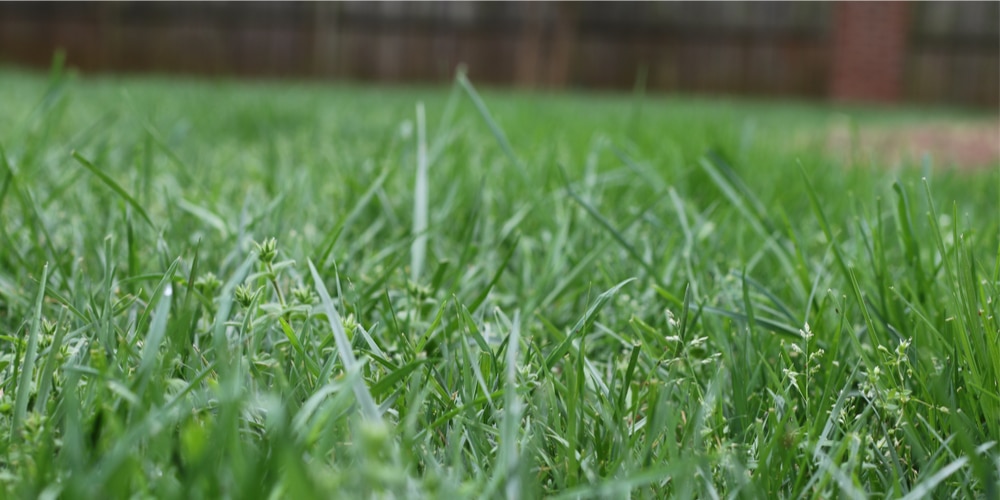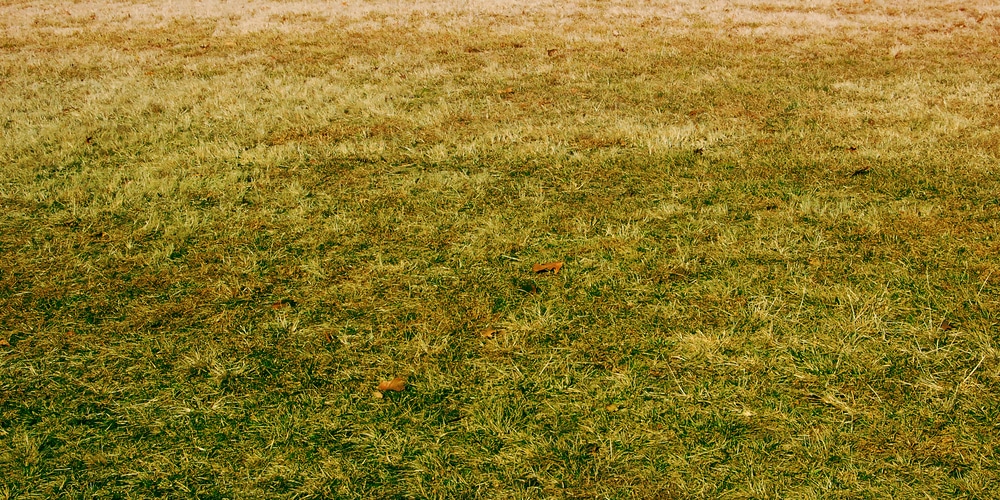If your lawn is looking patchy or discolored, the grass may be suffering from a nutrient deficiency. Common deficiencies include nitrogen and iron, which both have very similar symptoms.
Both deficiencies cause yellowing of the turf, though other symptoms may also accompany them. Knowing which is causing this problem can help you to select the right lawn amendment and fix your lawn problems. Let’s look at how to identify which nutrient your lawn is lacking.
Deficiencies: Nitrogen vs Iron Lawn Amendment

Nitrogen and iron deficiencies both create similar symptoms in your lawn. It can be challenging to tell which nutrient your lawn needs, but this can be determined by doing a soil test or by carefully looking at individual grass blades and your lawn as a whole for clues.
Nitrogen deficiency symptoms
The most common nutrient deficiency in lawns is nitrogen (N). Nitrogen helps to give the grass its bright green color. In response to low nitrogen levels, grass becomes pale and thins out, creating a patchy-looking lawn.
The lawn will have yellow or brown patches between the healthy sections. If your lawn has a nitrogen deficiency, then your grass will need more nitrogen in order to recover. To apply nitrogen, simply scatter a fertilizer that’s high in nitrogen over the patchy area and water it down. Your lawn should improve within one to two weeks if the lack of nitrogen is the only issue.
Iron deficiency symptoms
An iron deficiency will cause yellowing leaves, which die from the tips. Iron is a component of chlorophyll, so if your grass has an iron deficiency, then it will always have a yellow tint to the leaves. You may also notice that your lawn looks thin and patchy. If young grass seedlings look almost white as they grow, this is a sure sign of iron deficiency.
There are a few ways you can amend this issue. The first is to simply apply some fertilizer, but this will not fix the problem completely. The only way to amend an iron deficiency is by using a lawn amendment that has a high iron content, such as ferrous sulfate powder.
Ironite is the most popular type of iron lawn supplement.
What to do if you are unsure whether your lawn has a nitrogen vs an Iron deficiency

If your lawn is starting to turn yellow and looks patchy, you may be unsure whether the cause is a lack of nitrogen or iron. The best thing to do would be to test a small area of grass with a fertilizer that contains nitrogen.
If this makes a difference to your grass within two weeks, nitrogen deficiency is the most likely cause. You can then go on to treat your whole lawn.
If you have no success with a regular fertilizer, you can then apply an iron amendment to your lawn, as you will have determined that nitrogen deficiency isn’t the cause of the problem.
Don’t apply a fertilizer that’s high in nitrogen to a lawn that has iron deficiency, as this is most likely to worsen the problem. Alternatively, you can apply milorganite to your lawn as this contains both nitrogen and iron.
When using soil amendments, particularly those that contain iron, be careful not to get the product on walkways, paths, or driveways, as these can stain concrete. You should also follow the manufacturer’s instructions by reading the label before applying any fertilizers or soil amendments.
Conclusion
When comparing nitrogen vs iron for grass, you need to look at how your lawn is damaged.
If you notice that your lawn has patches of yellow and it is rather thin, then the grass may be suffering from a nitrogen deficiency. If the grass as a whole is looking very pale with yellowing leaves at the base and tips, then it may be an iron deficiency.
To fix either one, apply some fertilizer over the yellowing patches and use a turf conditioner to spread over the rest. This will help your entire lawn green up within a few weeks.
If you notice that there are brown patches in your yard, this could be because of an underlying issue such as soil compaction or pH levels. It might also be due to dog urine burn. If your grass is just very thin, it may need some aeration and seeding before applying any lawn amendments.
The two most common types of are iron and nitrogen lawn supplements are ironite and milorganite.